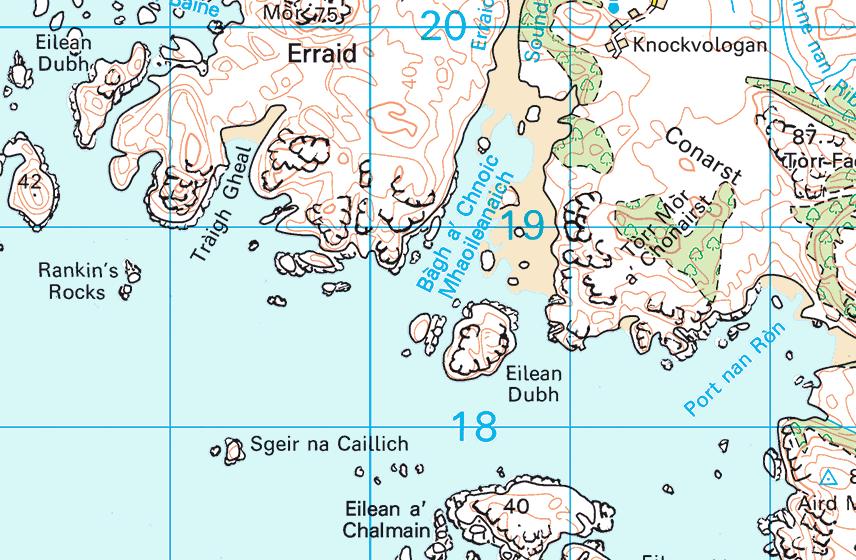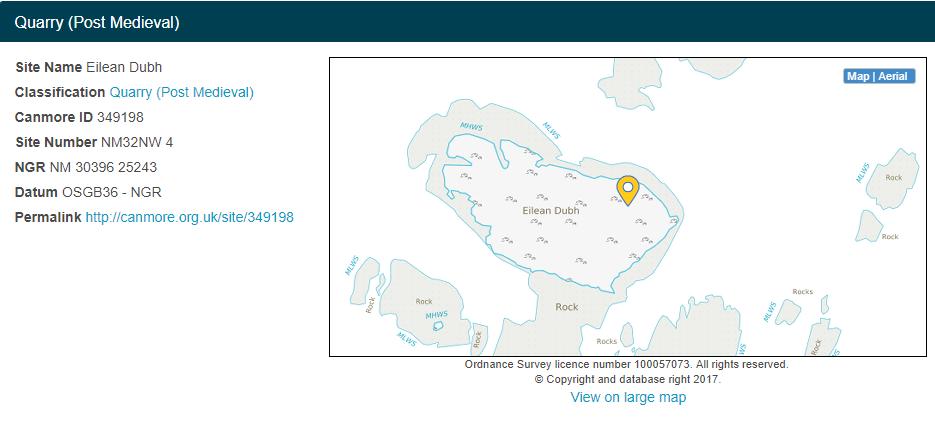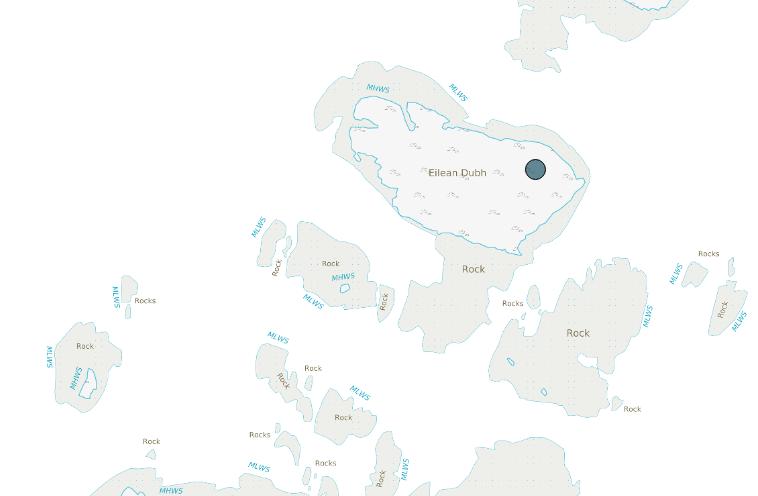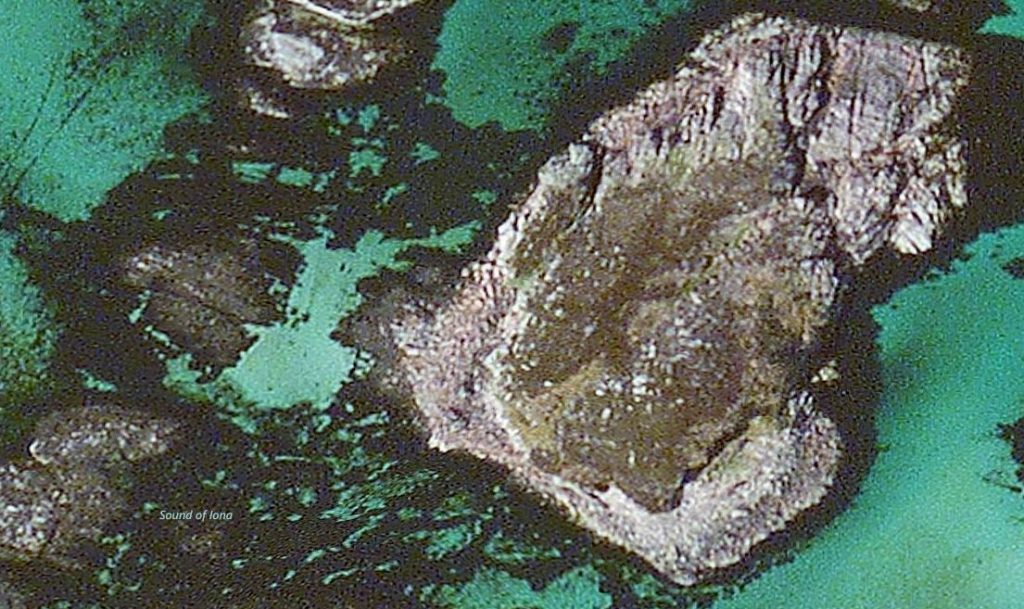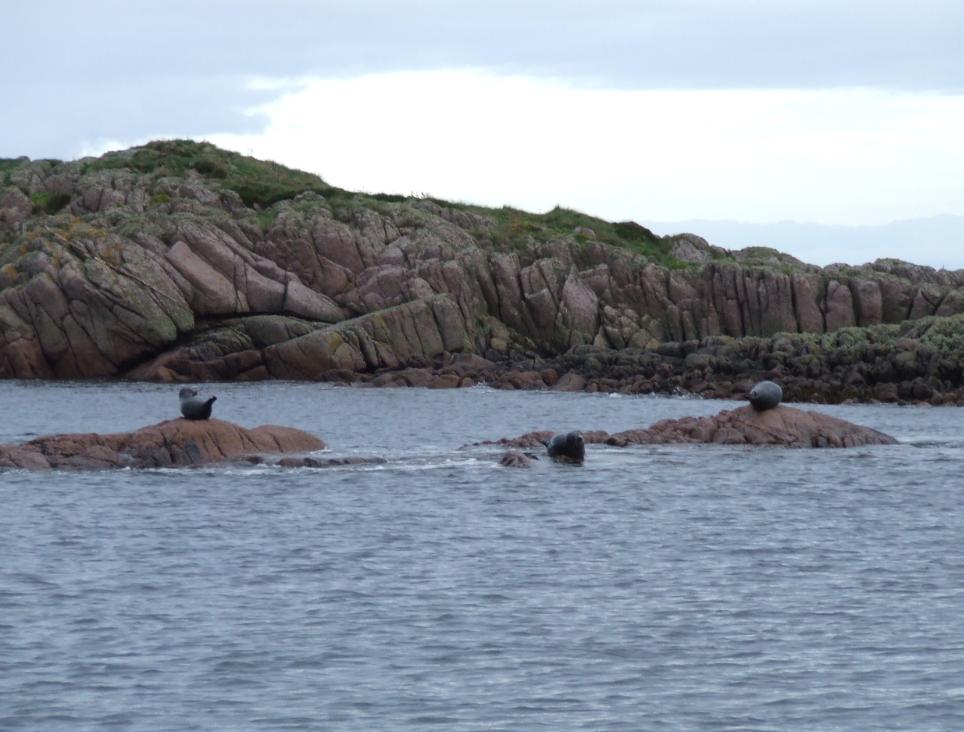Mermaid Monday: Red Hair Off Mull August 28, 2017
Author: Beach Combing | in : Modern , trackbackMermaid Monday again and this week we have a marvel from Mull, a Scottish island in the Inner Hebrides. Note that the Ross of Mull is the neck of land stretching towards Iona and that Beach’s rudimentary Gaelic show two islands with the name Eilean Dubh, the Black Island: one at the centre of the map above, the other in the top left corner: talk about confusing onomastics… Neither have any sign of a quarry and both could be described as being two hundred yards from the shore: though the Eilean Dubh of the centre is more consistently so. There is another reason for thinking that this is the islet that we’ll come back to in a moment. Anyway onto the sighting from 1894 (Anon).
The workmen in Black Isle Quarry, Ross of Mull, report (says a correspondent of the North British Mail) having seen a most curious sea animal, which, from the description given it, appears to have been a ’mermaid. ’ The quarry is in a small islet, about 200 yards from the shore, and the place where the men work just alongside the sea. When the creature was first noticed it was supposed to be a seal, which, with others, are visible almost daily. On a closer observation, however, and when the animal raised itself about a foot or 16 inches out the water, it displayed features different from the seal. Ultimately the creature came within 12 yards of the wonderstruck spectators, some of whom at once suggested a gruagach mhara, or sea nymph. In Highland fables the mermaid is considered of evil omen. Two of the younger men, however, jumped into a boat armed with iron bar ten feet long, but before they could get close enough the visitor sought refuge under the waves, and was seen no more. It remained on the surface, however, fully 10 or 12 minutes, so that there was ample opportunity for seeing it. ‘Mermaids’ have very often appeared on the Mull shore. The last occasion which one was seen was well-nigh forty years ago. The informant, who was an eye-witness, gives a very minute description of it. It dived and rose to the surface several times, tossing its red curly hair about its ears every time it appeared. From the head down to the waist it presented a female-like form, of colour resembling the white belly of a codfish.
Time passes slowly in nineteenth-century Mull: note that mermaids are ‘often’ seen and the last one was seen forty years ago…
The map below is an Ordnance Survey map from 1881
Note immediately to the north of Eilean Dubh there is an islet about a fifth of the size called the Eilean na Griogag. That looks to Beach like ‘the Island of the Fairy’. Note, too, that in the news report the mermaid was called the gruagach mhara or sea fairy. This might have been a case of the mermaid appearing in the right place, then.
Can anyone intervene with Gaelic more convincingly: drbeachcombing At yahoo DOT com
Bruce T. 29 Aug 2017: As for the mermaid it sounds like a seal playing in the kelp and Irish moss. My guess is a couple of members of the work detail who knew of the story of the mermaids but knew what the animal was decided to keep their mouth’s shut and play along to watch the fun when the believers told the more gullible locals. Or the bunch of them just made it up. A mermaid search beats hauling and pounding rocks. As for the report, I think the line that equated forty years with “often” is a sure sign that the eyewitness was having the man on while he got paid to tell the story. Life a little place like that is dull, having fun with outsiders, especially ones who would swallow a mermaid tale, is prime entertainment. He gave the man a clue it wasn’t on the up and up with that line about ‘forty years’ That takes it out the realm of a lie, it’s on the listener for not paying attention to all the details of the story. I’ve seen and heard country folks tell wild tales and give strangers crazy directions to places they’ve never been, all my life. They would excuse with something like, ‘It’s not my fault he didn’t ask me if I’d ever been there? He asked me how to get there. It’s over that way, he’ll figure it out.’ Then they’d break out laughing. It’s the same type of device, and by the date of the story, in use about the time the old goats I knew that did the same were born. In marginally literate rural world, the precise details of the spoken word are very important. Our reporter was man from a world where the written word was paramount and fine attention to the twist and turns of the spoken word in a land where it still ruled was likely beyond him.
29 Sep 2017: Huge thanks to Lanark for this.
I have found the Black Isle Quarry on the Ross of Mull. It is a disused quarry on the Eilean Dubh just North of Fionnphort where the little ferry leaves for Iona (and I sailed to Staffa from last year). It is about 5 km North of the two quarryless suspect Eilean Dubhs you wrote about in your original piece. In my previous email I had missed the reference to a post-medeival quarry on this Eilean Dubh on Canmore. I am certain it has to be this one…
It is this site marked with a blue circle on the Royal Commission of Ancient and Historic Monuments (Scotland)
It is marked as a Post Medieval Quarry and the island is called Eilean Dubh and is a few metres South of Eilean Dubh na Ciste (Black Island of the Grave).
This is a Bing zoomed view of the quarry site.
My own Gaelic is basic (but perhaps a little better than your own) however after my last email I double checked with a friend on Mull and they confirmed that the Eilean na Griogag you referred to is actually Island of Pebbles. As I said… it is very pebbly. I’m afraid unfortunately it is not anything to do with Gruagachs!
I have attached a photo of three mer-beauties I spotted on the rocks off Eilean Dubh on the way to Staffa last October. As you will note they are very curvy and attractive. None are playing with Kelp or Irish Moss. Ooooerr….Mrs….

